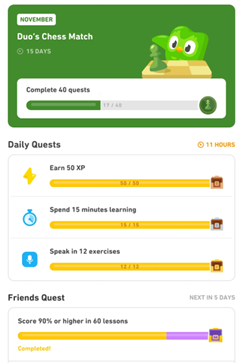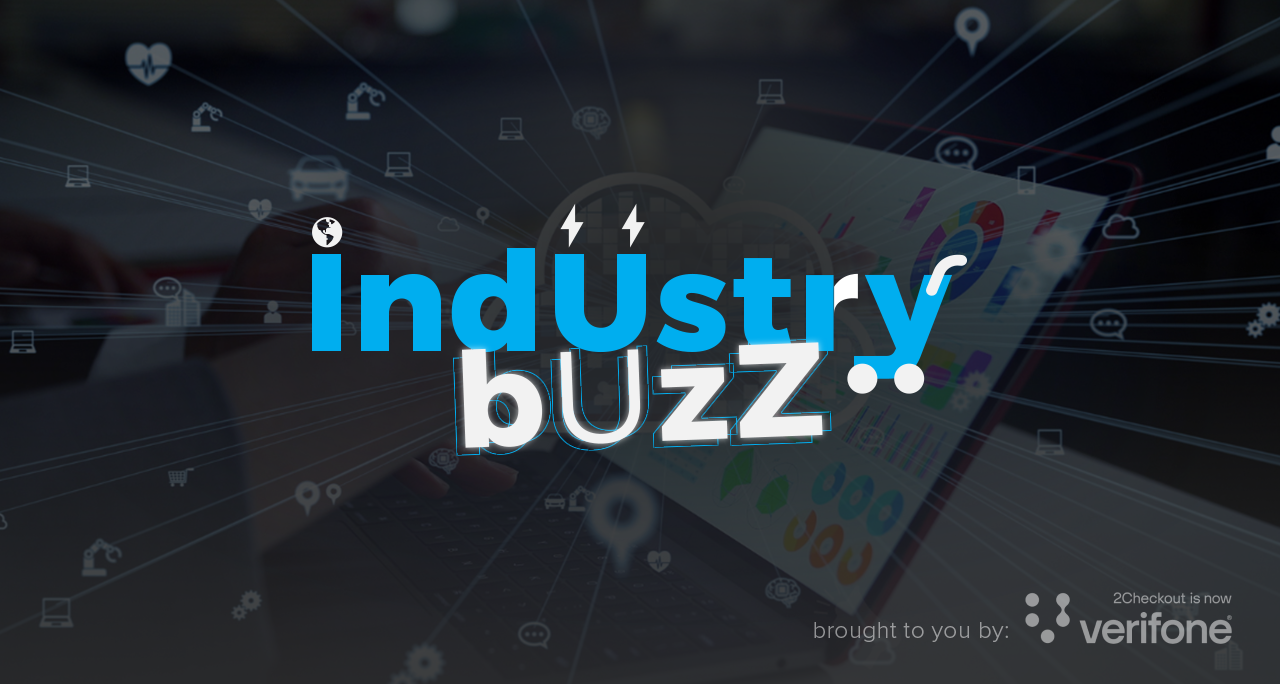The concept of gamified eLearning seems very simple (and intriguing) for sure—just take the elements that make games addictive such as points or rewards and add that to your workplace training program.
But is it that easy? Is that all you need to do to make your training “fun?”
The answer is no. If you don’t implement gamification in the right way, it could feel forced and even gimmicky. It can leave a negative impression, worse than your plain, old training method.
So, how do you gamify employee learning and make the most out of it? Let’s break that down.
1. Setting Clear Objectives
Gamified eLearning is not as simple as adding game-like elements to your training modules. Sure, it might grab your employees’ attention for a while, but gamification without clear objectives won’t drive real results.
The first step? Get clear on what you want to achieve with gamification.
And no, we’re not talking about vague goals like “improving skills” or “enhancing engagement.” You need to zero in on specific, measurable outcomes that actually move the needle. For example:
Instead of: “Increasing employee engagement in the training program”
- Try: “Boosting the training completion rate from 30% to 70%”
Instead of: Simplifying your training module
- Try: Identifying what parts of training are complex and how you would like to break them down into digestible pieces for the learners
Such clarity and specificity make it easier to measure success. But don’t cram too many goals into your gamification strategy. It’s best to start small, set milestones, and work toward your objectives in stages.
Important Tip: As a rule of thumb, you must create objectives that are SMART, which stands for Specific, Measurable, Achievable, Relevant, and Time-bound.
2. Incorporating Points, Badges, and Leaderboards (PBL)
Points, badges, and leaderboards (PBL) are the holy trinity of gamification. They tap into our basic need for recognition and a desire for status. Together, they create a sense of purpose and progression in your training program, thus keeping the employees engaged.
Let’s understand them one by one:
- Points: It’s the simplest way to reward employees for completing tasks or engaging with the training material.
- Badges: They serve as visual markers of achievement, celebrating milestones such as mastering a skill or completing a module.
![Guest BP - [Incorporating Points, Badges, and Leaderboards (PBL)] Badges](https://blog.2checkout.com/wp-content/uploads/2025/01/Guest-BP-Incorporating-Points-Badges-and-Leaderboards-PBL-Badges.png)
- Leaderboards: They encourage employees to perform better by adding a competitive edge to the training program.
![Guest BP - [Incorporating Points, Badges, and Leaderboards (PBL)] Leaderboards](https://blog.2checkout.com/wp-content/uploads/2025/01/Guest-BP-Incorporating-Points-Badges-and-Leaderboards-PBL-Leaderboards.png)
PBL is a powerful strategy for motivating employees and creating a sense of achievement among them. But its effectiveness depends entirely on how you use it. Here are some tips to help you:
- Always assign points strategically. For example, award higher points for completing tasks (like role-playing a difficult customer interaction) and fewer points for routine activities (like watching a training video on SaaS email marketing).
- Create badges with meaning. For instance, a “Compliance Champion” badge could signify someone who completed all compliance modules and scored above 90% on assessments.
![Guest BP - [Incorporating Points, Badges, and Leaderboards (PBL)] Badges with meaning](https://blog.2checkout.com/wp-content/uploads/2025/01/Guest-BP-Incorporating-Points-Badges-and-Leaderboards-PBL-Badges-with-meaning.png)
- Tailor leaderboards to your goals. For example, instead of showing overall scores, display rankings for specific areas like “most improved” or “fastest completion time.”
Before we move to the next strategy, here are two quick things you must avoid when implementing PBL:
- Never use points as participation trophies. If employees can earn points just by showing up, the strategy loses credibility.
- A badge for every minor achievement can dilute its value. So, don’t overdo it.
Now, onto the next section.
3. Designing Engaging Challenges and Quests

Gamification thrives on the thrill of embarking on quests and tackling challenges. But designing them can be a tough nut to crack.
What gives? If it’s too easy, your employees will disengage. If it’s too hard, frustration will take over.
Therefore, you need to curate challenges/ quests that push learners out of their comfort zones but also keep them coming back for more.
Here are six ways that will help you hit this sweet spot:
- Challenges must mirror real-world scenarios. For example, look at how Dominos prepared this simulation where the employee had to virtually prepare pizzas and get the orders right. Now, that’s not only fun but also relevant.Even small details, like integrating a color picker for designing toppings or presentation, can make the activity more interactive and visually engaging.

- Every challenge must have a clear endpoint. So for challenges like role-playing a customer interaction, you can set a goal to improve customer experience and reduce churn rate by 20%.
- Break challenges into levels to introduce progression. That means the first few levels of the challenge can consist of easy tasks, with increasing levels of difficulty.
- Consider adding timers. This is an additional step that you can take to make the challenge more exciting and engaging for the employee. However, don’t go overboard with this as it can create anxiety among employees instead of urgency.
- Create a narrative. Deloitte’s zombie-themed onboarding is a great example of blending story-building into a quest to enhance immersion. New employees had to complete tasks to learn consulting skills and “survive the apocalypse”.
- Reward incrementally. Quests are long and if rewards are only given at the end, the journey can be overwhelming. So, make sure to reward employees as they reach certain milestones within the quest.
4. Providing Immediate Feedback
Feedback is the backbone of any learning experience. But what matters most is how immediate it is.
For example, providing feedback a week after the training ends can dilute the impact of your training program, no matter how fun and engaging it was.
So first, be immediate (better if you can offer real-time feedback).
Second, provide constructive feedback that helps learners correct mistakes. Employees respond best to a mix of encouragement and guidance.
Third, be specific. Generic comments like “good job” or “try harder” aren’t really helpful. Instead, your gamified training module should highlight what was done well and what needs improvement.
Finally, don’t overwhelm your employees with too much feedback at once. Focus on one or two key points to improve with each task.
5. Encouraging Collaboration Through Team-Based Activities
Humans are naturally social. Adding collaboration to your training taps into that innate desire to share ideas, work together, and achieve common goals as a group.
So, while individual challenges focus on personal growth, team-based learning activities bring diverse perspectives and skills to the table. This not only helps your employees learn from one another and enhances employee productivity through shared knowledge and automation, but also fosters a sense of camaraderie.
To build an engaging team-based activity, keep these two principles in mind:
- Different Roles, Shared Goals: Assign specific roles within a team so that every member contributes in a meaningful way. But keep a common objective so that the team members come together to achieve it.
- Interdependency: While each team member has a distinct role to perform, the success of the activity should rely on collective effort, not just individual performance. For instance, in a supply chain simulation, one team member might manage procurement while another manages logistics. This way, both members coordinate to ensure timely delivery.
Here are a few do’s and don’ts to make team-based activities truly effective:
- Do: Rotate team members periodically if you’re creating multiple teams. This helps employees interact with different colleagues and keeps things fresh.
- Don’t: Create scenarios where some team members feel overburdened while others are barely contributing.
- Do: Make team activities engaging, not a chore. Gauge interest and tweak activities to ensure they’re enjoyable and productive.
Important Tip: Grouping learners who benefit from auditory cues with those who don’t can seem tricky. Consider implementing tools that convert text to audio (and vice-versa) to make your training accessible to all and provide a diverse eLearning experience.
6. Implementing Progress Tracking and Rewards
Tracking progress provides employees with real-time insights into their performance so far. It answers key questions: What have I achieved? How many levels are still left? What’s next?
Without a clear way to track progress, learners can quickly lose both direction and motivation.
Here are some popular ways to track progress effectively:
- Dashboards: This is by far the most comprehensive progress tracker. It allows employees to view all their performance metrics in one place. It’s perfect for showing points earned, badges unlocked, completed tasks, and overall rankings.
- Milestone Markers: Milestones not only help break training into stages or levels but also provide a sense of achievement to the learners as they move higher.
- Progress Bars: Simple yet effective, these show exactly how much of a task or course has been completed.

But tracking is only half the equation. To keep employees motivated, you also need to reward their progress.
Rewarding typically falls into two categories—intrinsic (access to advanced levels or certificates) and extrinsic (tangible incentives such as gifts and extra time off).
![]()
When designing your reward system, keep these tips in mind:
- Customize rewards to align with employee preferences. For example, one employee might prefer a public shoutout while another appreciates a private note of recognition.
- Balance small, frequent rewards (badges or points) with occasional larger prizes (“Employee of the Month” recognition).
- Celebrate achievements but also provide a clear path for what’s next to maintain momentum.
7. Ensuring Balance to Prevent Over Justification
“Overloading your gamification strategy with rewards or competition can backfire. When employees become too focused on external rewards, they may lose the motivation to learn—a phenomenon known as overjustification.”
Vineet Gupta, Founder – 2xSaS
To avoid this, it’s essential to strike a balance. Here’s how:
- Design your gamified experience with clear eLearning objectives that are communicated with the employees upfront.
- Incorporate moments where employees can evaluate their own progress and growth.
- Use rewards sparingly and ensure they feel meaningful.
- Overly competitive environments can demotivate those who struggle to keep up. So, introduce collaborative elements like peer-based feedback, unified shared team inbox, or team-building activities to balance the dynamics.
- Ensure every element of your gamification strategy ties back to the overarching goal of employee skill development.
Conclusion
In the end, gamification is a means to an end, not the end itself. It’s easy to get carried away by flashy tech, but at its heart, gamified eLearning is about empowering employees to grow, develop, and succeed in meaningful ways.
So, use the strategies we’ve shared in this article to build a solid gamified training program and focus on intrinsic motivation. We’re sure your employees will contribute and go the extra mile not because there’s a badge to collect or a leaderboard to climb, but because they genuinely care about their growth and the value they bring to your company.
About Author

Natasha Merchant is specialized in content marketing and she has been doing it for more than 6 years. She loves creating content marketing maps for businesses and has written content for various publication websites.
At present, she is helping SaaS Buy to improve online visibility with the help of SEO, Content Marketing & Link Building. natasha@saasbuy.com





